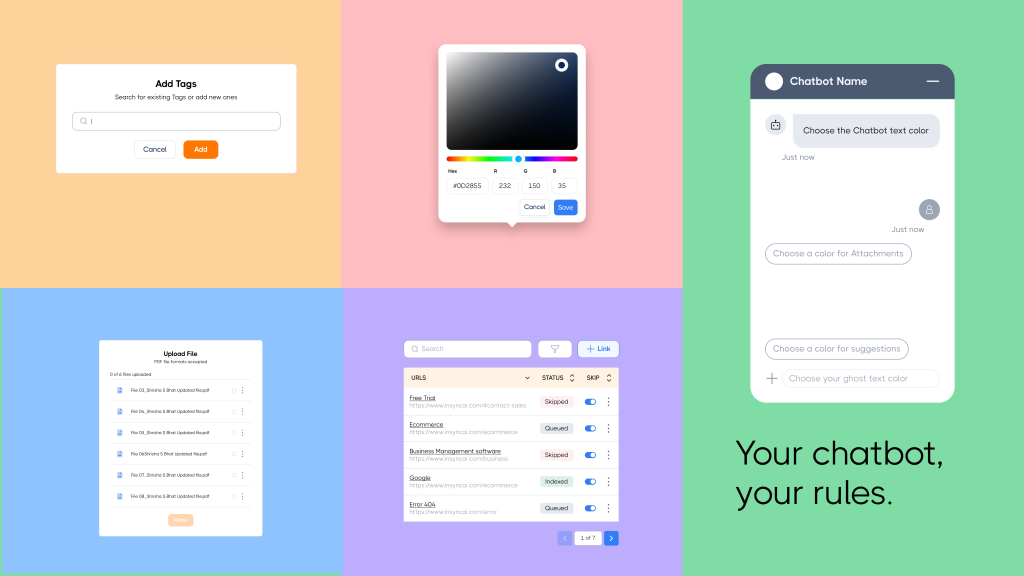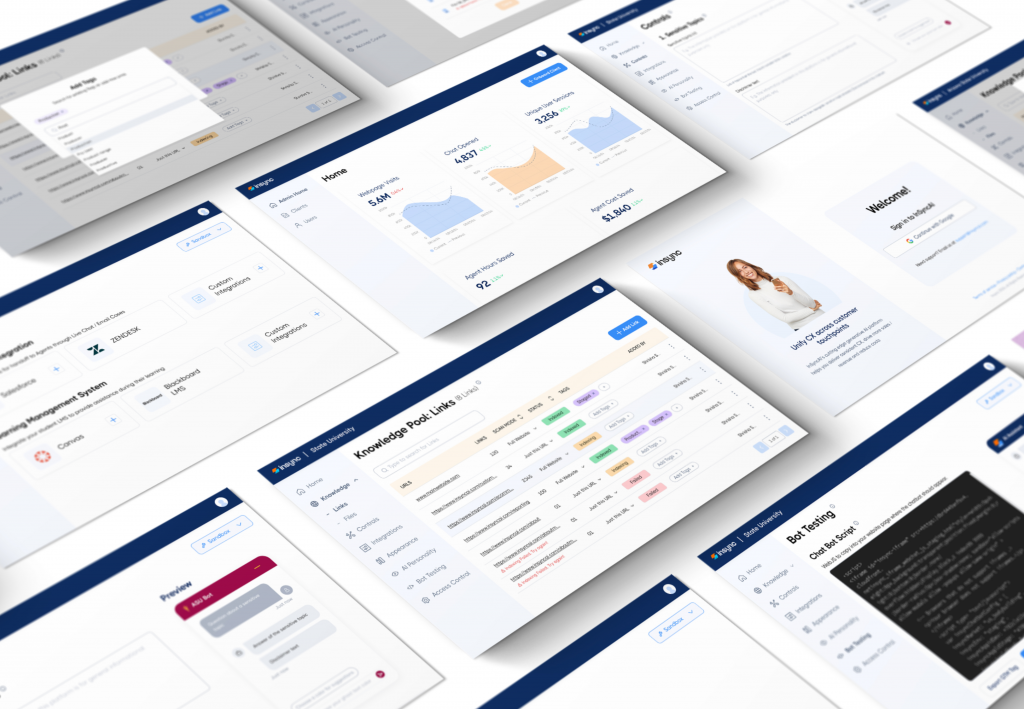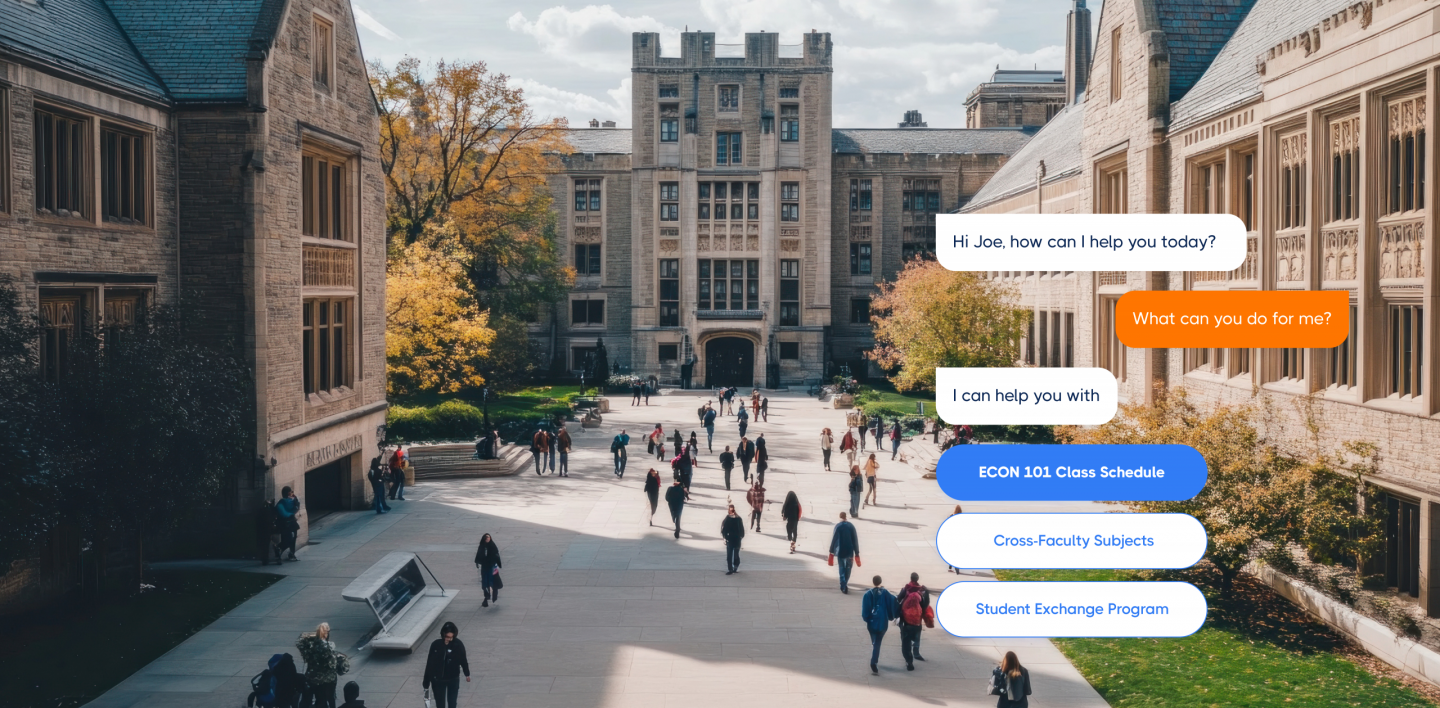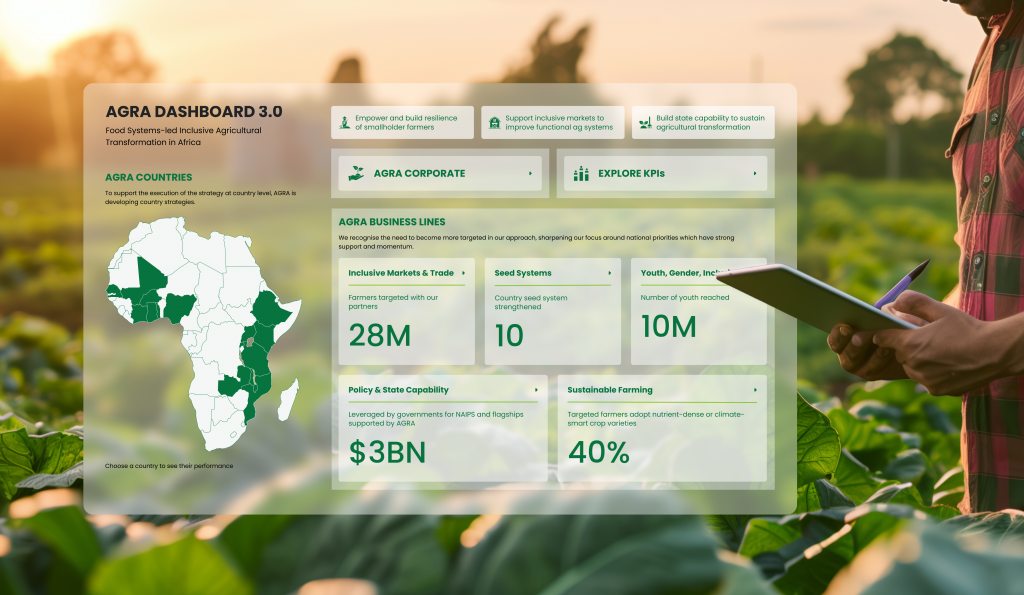InSync.AI is a Conversational AI platform enabling enterprises to deploy context-aware, agentic chatbots across customer support, e-commerce, and education. With a focus on fast implementation, their products reduce support load, improve customer experience, and boost conversions—without needing additional engineering effort.
We collaborated with the InSync team to design a no-code chatbot builder that gives users the power to create and manage chatbots effortlessly. The goal was to craft an interface that was intuitive for first-timers, efficient for power users, and scalable for future growth—all within a two-week sprint.
EXPERTISE
- Research
- Systems Thinking
- UX & UI Design
OUTCOMES
- Design of a modular interface ready to scale with future features and use cases.
- Clickable prototype to support development and align product vision across teams.
- UI guidelines aligned for design consistency across the ecosystem.
APPROACH
Laying the Groundwork
We began by immersing ourselves in the product space—aligning with InSync’s business goals, benchmarking similar tools, and identifying UX patterns that worked well (and didn’t). This helped us define the principles our design needed to uphold:
- Semantic Intuition – Interfaces should feel familiar and let users make decisions quickly.
- Clarity Over Complexity – Easy navigation and minimal complexity to avoid user overwhelm and disengagement.
- SaaS Meets Simplicity – A fusion of industrial SaaS functionality and a modern, minimalistic aesthetic, despite the product being a backend solution.
Working closely with the Insync team, we mapped the product’s core user flows and structured the sprint around clusters of related features—enabling rapid prototyping while ensuring cohesion.
DESIGN

Clear and Confident UX
The goal was to keep things self-explanatory without overwhelming users. We embedded subtle guidance directly into the interface—using placeholder text, contextual microcopy, and helpful defaults to reduce friction. Rather than relying on tooltips everywhere, we focused on building clarity into the primary UI elements themselves. This approach laid the foundation for a smooth self-serve experience.
Building for Flexibility and Scale
Even as we worked within a narrow MVP scope, scalability was a priority. InSync envisioned a platform that would grow rapidly—so we created a modular UI system that could expand without breaking. We defined core interaction patterns, visual hierarchy rules, and reusable components to keep things consistent even as complexity increased. This approach future-proofed the product and reduced development overhead as new features rolled in.
Navigation that Mirrors Real World Use
We organized the interface based on how users would actually move through the system—grouping related tasks and flows to match how customer success teams onboard and support clients. This made setup feel more intuitive and helped ensure that new users wouldn’t get lost.
Collaboration with InSync was tight throughout—quick feedback loops, regular check-ins, and shared ownership of the sprint kept everyone aligned from start to finish, making sure the design remained tightly aligned with business goals and technical requirements.
DELIVERY

We delivered a comprehensive design system and a full set of UI screens ready for implementation, along with a clickable prototype showcasing the product’s core capabilities. This became a useful tool for demonstrating the value and vision of the platform even before full development was complete.
But beyond deliverables, what has always stood out in our collaborations with InSync is how they work. They brought a mindset of testing fast, releasing early, and iterating with intention—something that has since shaped our own approach to design sprints. Instead of chasing pixel-perfect from day one, they encouraged progress over perfection: ship a strong foundation, gather feedback, and evolve rapidly. It was a healthy reminder that the best products aren’t static—they’re living systems that get smarter over time.
Working with a team so invested in feedback loops and continuous improvement made this project not just a design exercise, but a genuinely collaborative build. As of 2024, the product is in active development, with future iterations rolling out based on learnings from early users—built on a flexible system we crafted together.


